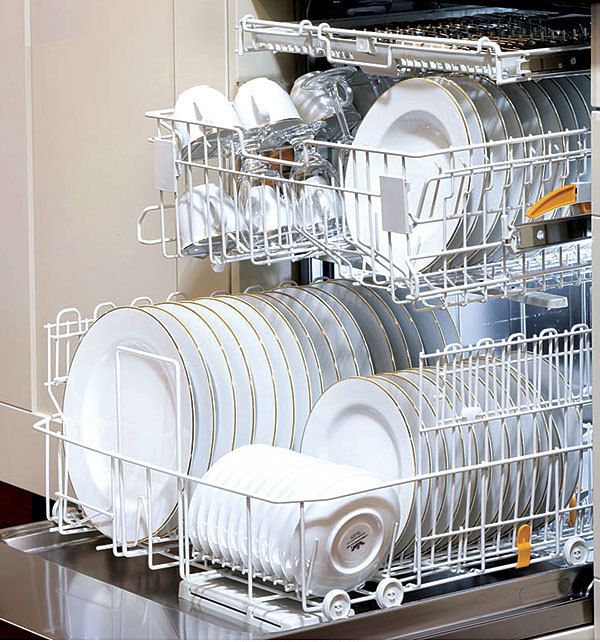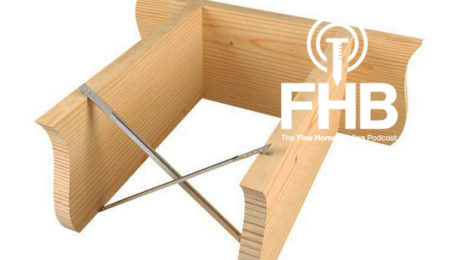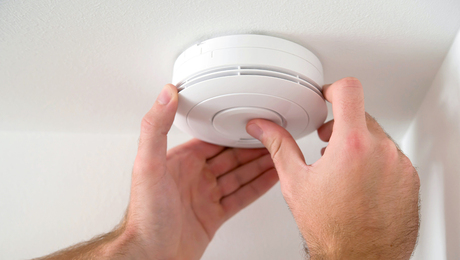Making Do with an Old Dishwasher
Follow these basic guidelines for preserving the life of your old dishwasher. And help save the planet while you're at it.

My wife and I would really like a new dishwasher. The more I learned researching “The Dirt on Dishwashers”, the greater my frustration with our inexpensive GE Nautilus. At the end of the cycle, dishes and glasses are plastered with food particles, it’s hard to fit bowls and different-size glasses next to one another in the top rack, and it seems expensive to run. At the moment, though, the new Bosch we have our eyes on isn’t in the cards. Until it is, I decided to look at ways to maximize the performance of our existing dishwasher. Here’s what I’ve learned.
• Run full loads. It’s pretty self-evident that if you want to conserve energy and water, you need to make the most of the rack space and run fewer cycles. Skip the pot-scrubber and heated-dry options to reduce energy consumption further. In most cases, the regular cycle cleans just as well without the extra time of the heavy-duty wash.
• Check the filter. Dishwashers either have a self-cleaning filter or a design that calls for you to remove the filter periodically and clean it by hand. The first type has an integral disposal to grind up food. If your dishwasher doesn’t have a disposal, check the manual for recommended filter-cleaning intervals.
• Switch detergents. Detergents aren’t all equally effective. Dishwasher soaps rely on different cleaning agents, and some are better than others. Phosphor-based detergents have historically been best-sellers and do a good job cleaning. But they have the nasty side effect of poisoning the water supply for fish and other aquatic creatures. We use phosphor- and chlorine-free detergent, and found that Seventh Generation cleans better than Trader Joe’s brand. Several states now ban detergents with phosphors, and a federal ban is currently under consideration. For now, look for detergents with enzymes as an alternative. You can expect to find improved phosphor-free detergent formulations as manufacturers react to phosphor bans in the coming year.
• Use a rinse aid. Rinse aids release a surfactant in the rinse cycle to change the surface tension of water. This causes water to sheet off items rather than bead up on them, eliminating spots. It also helps to keep food bits from depositing on items. Some people recommend vinegar as an alternative to packaged rinse aids, but I haven’t tried it.
• Check the water hardness. If glasses coming out of the dishwasher look cloudy, soak them in water. If you can wash away the cloudiness, it’s lime scale. This means the water is too hard and needs a softener. If the cloudiness can’t be removed, it’s etching, and you should use less detergent and/or stop rinsing items before running the dishwasher.
• Don’t prewash. Most dishwashers sold in the past decade shouldn’t require prewashing items before loading. Simply scraping food chunks and residue should be enough. In fact, some machines will clean better if the dishes are dirty; otherwise, the water and detergent will abuse your glasses and place settings (see above). Unfortunately, some dishwashers, like ours, seem to require scraping and rinsing the plates first.
The lowdown on loading
Want cleaner dishes? Then think like a water drop and load your dishwasher so that water can get at all the dirty surfaces. Start with your dishwasher manual. Most recommend how to load the racks, and the suggestions make a difference. Based on the advice of several manufacturers, you should:
• Load small bowls upright in the center row of the top rack. Those in the rear section should face forward and those in the front section should face backward so that the center sprayer reaches all of them.
• Place cutting boards, cookie sheets, and platters along the sides or back of the rack so that they don’t block water flow.
• Place casserole dishes, serving bowls, and heavy-duty pots face down or at a slight angle in the bottom rack. (The center of the rack often cleans best.)
• Load spoons and forks so that they can’t nest by mixing silverware types in each basket section with some handles up and some down. (Also, always load the knives so that the handles are up.) Place serving spoons and utensils that are too tall for the silverware basket in the top rack or on the flip-down cup shelves, if your dishwasher has them.
Photo: Courtesy of Miele

























